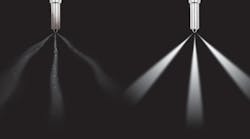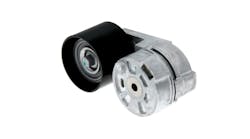Since the U.S. EPA issued its ultra low sulfur diesel (ULSD) mandate in mid-2006 to help lower emissions, diesel vehicles have experienced a multitude of issues. Since 2012, all non-road diesel fuel engines have also been forced to use ULSD. This includes farm and construction equipment, as well as locomotive and marine applications.
Since the switch to ULSD, many fleets and service technicians have experienced one or more of the following issues:
- Lower energy content (BTUs) compared to low sulfur diesel (LSD), resulting in lower fuel economy.
- Because ULSD is hygroscopic, it absorbs moisture from the air.
- Reduced levels of lubricity.
- Poor cold flow characteristics.
- Aggressive chemicals causing corrosion.
Besides fuel quality and characteristic issues like these, fuel systems can develop ULSD related problems over time. Some of the most common issues that fleets and service technicians face today are:
- Rust and corrosion can form in lines and tanks from the aggressive chemicals found in ULSD.
- Low fuel lubricity causes wear or scarring in pumps and injectors.
- Sludge can build up inside tanks and result in plugged filters.
IDID
However, one of the biggest problems diesel owners face can be the size of just a few microns: internal diesel injector deposits (IDID). Common in high-pressure common rail fuel injectors, these deposits continue to show up more frequently as manufacturers develop injection systems with even tighter clearances.
Modern injectors are precision instruments. With tolerances as small as 1 micron and as many as 24 holes in the injector tip, any deposit can rob economy and power.
IDID can be separated into two types: coking and sticking. Coking deposits are formed on the inside nozzle fuel flow holes and the tip of the injector. Coking deposits have been around well before ULSD, affecting fuel spray pattern and fuel volume delivery.
Sticking deposits are found inside the injector on internal moving parts. These deposits affect injection timing and fuel volume delivery.
Incompatibility of commonly used and widely accepted corrosion inhibitors can lead to both kinds of deposits. Additionally, trace amounts of sodium have shown up in ULSD, and many injector deposits are identified as carboxylate salts.
Injector deposits are nothing new, and with varying quality fuel across the country and injection systems constantly being developed with tighter clearances, IDID promise to be an issue for a while longer.
Fuel Additives
Both fuel quality issues and fuel system issues can be addressed by incorporating a fuel additive into a fleet’s maintenance routine. Most fleets will cringe at having to take the time to add a fuel additive at every fill up, but not every additive needs to be used each time fuel is added.
A fuel additive, such as Hot Shot’s Secret Diesel Extreme, for example, addresses every issue noted previously, including IDID, and is formulated for use once every six months.
The Future
What’s next for the diesel industry? As diesel emissions are scrutinized even more, the EPA might push fuel manufacturers further towards plant-based biofuels, such as biodiesel. Both renewable and biodegradable, biodiesel promises to be a viable option in the future.
Common biofuel sources like soy beans and corn can still leave an impact on the environment by requiring farmable land and freshwater for its production.
According to ExxonMobil’s website, their scientists have developed a strain of algae that can convert carbon into record amounts of energy-rich fat, which can then be processed into biodiesel. While this algae process isn’t new, it shows how far scientists are searching for answers.
Chris Gabrelcik is president and CEO of Lubrication Specialties (www.lubricationspecialties.com). The company provides solutions with the formulation of new additives, lubrication or equipment. With the development of Hot Shot’s Secret Stiction Eliminator in 2004 followed by Diesel Extreme, it has developed more than 30 additives, with a concentration on diesel performance across multiple markets, including fleet, heavy duty transportation, light vehicle, marine, powersports, agriculture/construction, RV and industrial. Gabrelcik is one of the few people worldwide to hold both the certifications of Lubrication Specialist (CLS) and Oil Management Analysis (OMA).



